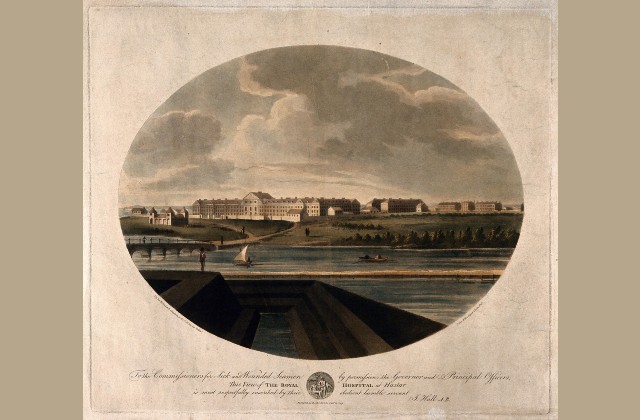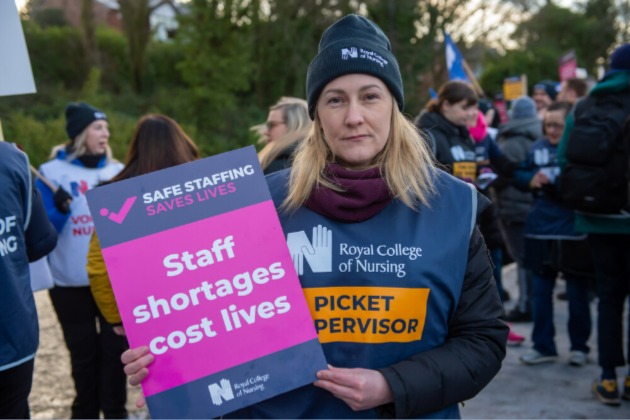Professor Anne Marie Rafferty, RCN President, has been involved in two decades of vital nursing workforce research. She explains how the evidence could help us achieve safe staffing
The growing global evidence that Anne Marie and academic colleagues have gathered shows we need more nurses, with the right skills and support, if we want to reduce patient mortality and improve nurses’ wellbeing.
The RCN has used this research to create the aims of its safe staffing campaign and tell all four UK governments what nurses and patients need now. We sat down with Anne Marie to find out more about her crucial work.
What does the research show?
There’s been a steady build-up of evidence from different sources. It began with Linda Aiken in America in the mid-90s using her nursing workforce research to lobby for health care reform. The sceptics on this side of the Atlantic said it wasn’t relevant here – there was a study commissioned to explore that further, then an international study of nursing and hospital outcomes. Now we know there is a consistency in the findings. It does play out exactly the same way in this country.
More recently, the RN4CAST looks at how organisational features of hospital care impact on nurse recruitment, retention and patient outcomes. I was leading that effort in the UK and it is beginning to produce results from Europe. For example, in acute care following common surgery, every one patient added to a registered nurse’s [RN’s] workload is associated with a 7% increase in deaths. And substituting one RN for one nursing support worker is associated with a 21% increase in chance of death. Meanwhile every 10% increase in the number of degree-educated RNs is associated with a 7% drop in patient mortality.
In acute care following common surgery, every one patient added to a registered nurse’s workload is associated with a 7% increase in deaths
With that data, you can start to make points around education, mortality and staffing. You can look at variables in the environment that you can change to give better outcomes. We're building up an argument that is demonstrating the importance of investing in the nursing workforce. We need more money in the system, and we need more of that extra money coming to nursing. That needs to be the number one priority for the health secretary moving forward.
The research has influenced the legislation in Wales and Scotland. I watched the debates and I think the politicians get it. Not least, these successes create a sense that we can do this in England – it’s not the case that nurses don’t have a voice.
How do staffing levels affect nurse wellbeing and patient satisfaction?
We know that poor staffing leads to higher levels of burnout and job dissatisfaction among nurses – adding more nursing support workers does not improve this. Poor staffing also leads to lower patient satisfaction levels. Patient satisfaction and nurse wellbeing then translate into patient outcomes in terms of overall mortality.
How could systems of accountability help nurses?
Accountability enables different conversations around safe staffing – in boardrooms, in HR and finance departments, in governors’ meetings – not just among nurses. It spreads accountability across the organisation. The onus is currently on ward managers and other nurses. Introducing accountability can help make safe staffing a shared responsibility.
Would setting ratios of nursing staff to patients solve safe staffing?
I’m not sure we’ve debated it enough. If we look at some of the research on ratios, for example in California, it does seem to have provided enduring benefits. But I think this needs more scrutiny. We couldn’t move to ratios immediately. It could be a blunt tool, so we would need to figure out how it could work in practice.
Do we need a mix of skills on nursing teams?
We need a high concentration of RNs in the workforce, because we know that's where the leadership comes from. A balance of 70:30 (RNs to other nursing staff) is what the safe staffing tool originally came up with.
But it’s not black and white. For example, you can’t say that a new band five is the same as a seasoned band six. It depends on how people are deployed and supported, and ultimately people do work in teams.
Based on the research, I would say that the richer the RN mix, the better. A number of organisations that have got into trouble with their quality of care and patient outcomes have had too few registered nurses.
Why are education and career progression important?
In workforce planning terms, we have had a very fragmented system. The workforce is only planned to the point of registration. Beyond that point, there’s no rationale, it’s not driven on the basis of demand.
I don’t think nursing education, career progression and safe staffing are connected within the system. We need all of those things to be designed to deliver a long-term plan for the nursing workforce, and if any arm of that tripod is rickety, then it will all fall apart.
But the future is fixable. Policymakers can choose to support the nursing profession to flourish. Or they can choose to continue to reinforce the design of a system that fails to deliver.
Safe staffing is the most important piece of work that the RCN will do in the next few years
Why does research matter?
It's increasingly accepted in government circles that policy needs to be evidence based. It gives us a framework on which to make the argument for safe staffing. I don't think anyone could disagree with the evidence – the quality or the volume – that we've been gathering for the last 20 years.
What’s next?
We need to be learning as we’re going, analysing our progress and seeing what works. Safe staffing is the most important piece of work that the RCN will do in the next few years – we need to make sure the brain of the whole organisation is fully on this.
Illustration by Jenny Robins







